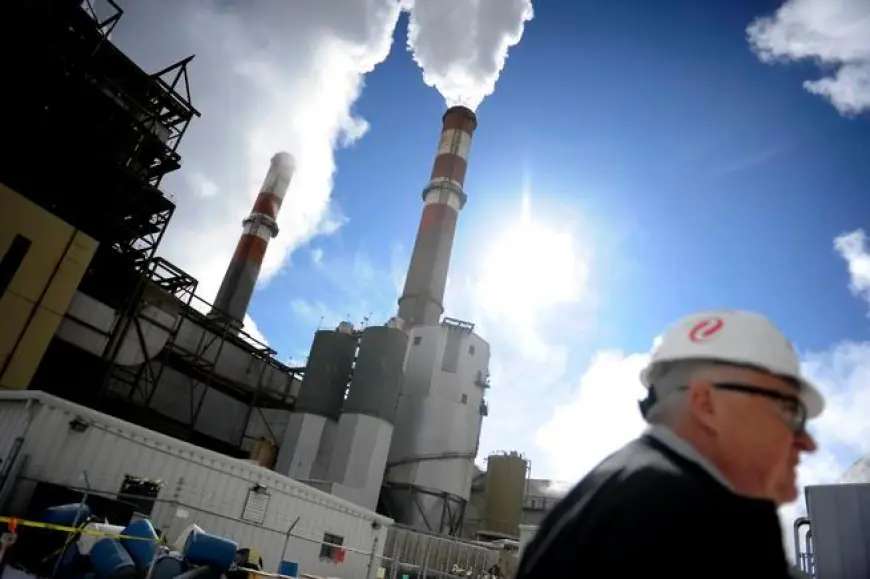Wind and solar would replace most of Xcel’s troubled Comanche 3 coal plant power — but not all
Xcel Energy's proposal to replace the last of its coal-fired power includes some natural gas, which has meet resistance from critics.

Most of the power to replace the last of Xcel Energy’s coal plants in Colorado, including a chronically troubled facility, would come from renewable energy sources — but not all.
Xcel filed the first phase of a proposal to replace the power currently generated by the Comanche 3 coal plant in Pueblo and the Hayden coal plant in Routt County. What the company calls its “base” portfolio would add 7,200 megawatts of new wind power and 3,000 megawatts of new solar along with battery storage.
One megawatt of solar or wind energy can supply electricity to several hundred homes.
About 1,600 megawatts would come from natural gas. Two of the scenarios would use no natural gas, relying more on energy storage.
Xcel plans to close the Hayden coal plant in 2028. The capacity at the Pueblo plant will be scaled back starting in 2025 with full shutdown planned by the end of 2030.
“We made the commitment that we would be completely out of coal by 2030. This is in furtherance of that commitment,” Robert Kenney, president of Xcel Energy-Colorado, said Wednesday.
The release of Xcel’s plan is the first step in a process that will likely stretch into 2026. The Colorado Public Utilities Commission will consider the company’s proposed framework and, along with other parties, weigh in later on the specifics.
Xcel, Colorado’s largest electric utility, and other power companies have cut back the use of coal or plan to as they strive to reduce the use of fossil fuels to improve air quality and curtail greenhouse gas emissions.
Kenney said the renewable energy projects in the proposal and in an electric resource plan approved in late 2023 by regulators are designed to reach the goal of reducing emissions from 2005 levels by 80% by 2030.
Pressure to close Comanche 3 earlier than the previous target of 2040 intensified as operational problems continued to plague the plant. A 2021 report by the Colorado Public Utilities Commission said Comanche 3 had averaged 91.5 days per year of outages over a decade and was out of commission for all but a handful of days in 2020. Unit No. 1 of the plant was closed in 2022 and Unit 2 will be shut down in 2025.
The PUC has an opportunity to require that Xcel prioritize clean, reliable energy, said community members and representatives of environmental organizations. They criticized Xcel Energy’s proposal to replace some of the coal-generated power with natural gas.
“Puebloans have repeatedly made it clear that they want wind and solar to replace the coal-fired power plant in our community. We want cleaner energy for cleaner air and healthier people. Renewable energy provides good jobs and economic opportunities for our city and county,” Jamie Valdez, a Pueblo resident and state manager of Mothers Out Front, said in a statement.
Valdez, whose group advocates for renewable energy, said Pueblo doesn’t need “more methane burning in our community and we certainly don’t need an untested nuclear facility.”
Earlier this year, a committee of Pueblo community members recommended that Xcel Energy replace the coal plant with a gas-fired plant or small modular nuclear units. A report by the Pueblo Innovative Energy Solutions Advisory Committee said what it described as advanced nuclear technology would create more jobs and tax revenue for local governments.
“We appreciate that Xcel has listened to Puebloans and others across the state and is proposing significant new renewable resources,” Eric Frankowski, executive director of the Western Clean Energy Campaign, said in a statement.
But a new gas plant would be bad for Pueblo, Xcel customers and the climate, Frankowski added.
Kenney said the portfolio Xcel has focused on would help the utility meet its goals for increasing the use of renewable energy, reduce greenhouse gas emissions and ensure it can deliver power when “the wind isn’t blowing and the sun is not shining.”
“It would allow us to meet what we expect to be new demand from more building electrification, more transportation electrification and new data centers that are coming into the state,” Kenney said.
The demand for power could grow at a compounded rate of 4% from 2023 through 2031, compared with an average annual rate of 0.7% over the past five years, according to one of the forecasts Xcel filed with the PUC.
Xcel Energy is open to considering nuclear power to help meet the growing demand. Kenney said the company operates two nuclear reactors in its home state of Minnesota.
However, the technology behind small modular reactors is still evolving and commercial versions likely wouldn’t be available in time when Xcel starts taking bids on energy projects, Kenney said.
Xcel is committed to supporting the workers and communities where the coal plants have been located for decades, Kenney said. Companies bidding on projects in those communities will receive bonuses.
In its filing with the PUC, Xcel said it is also committed to investing in the communities to help make up tax revenue when the coal plants close. Kenney said in previous plant closures, the company has transferred employees to other jobs, provided retraining or offered people early retirement.
Get more business news by signing up for our Economy Now newsletter.
What's Your Reaction?








































































































